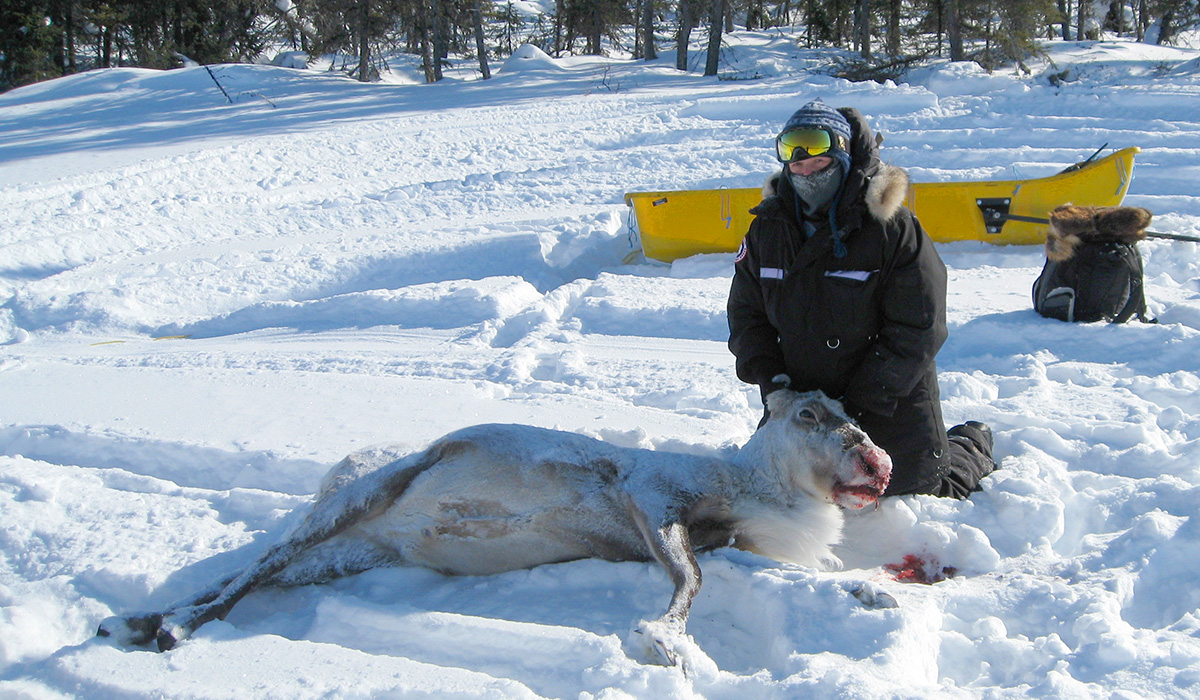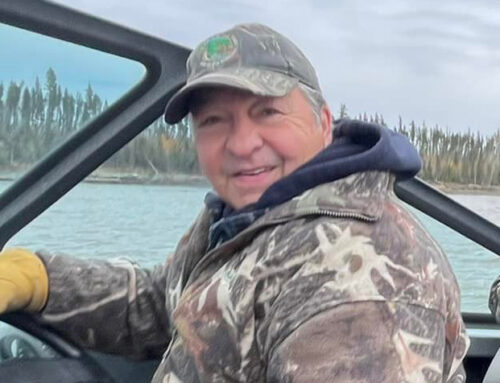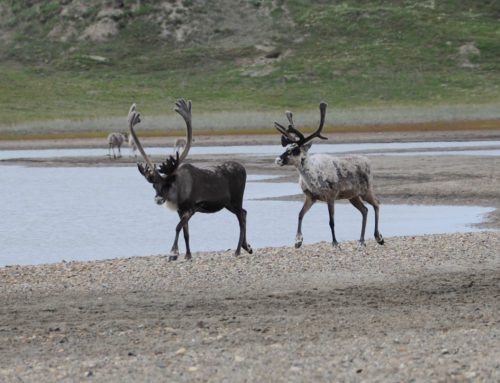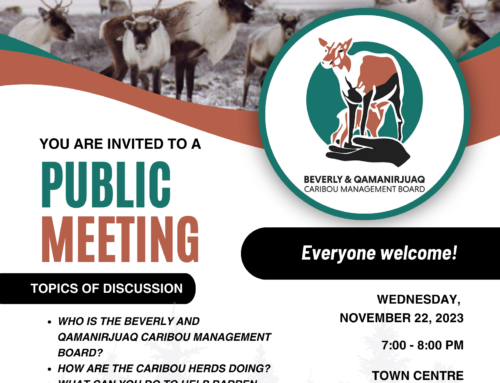May 21, 2014 – A strong message came out of the May 6-8 meeting of the Beverly and Qamanirjuaq Caribou Management Board (BQCMB): If caribou calving grounds and post-calving areas aren’t protected from mining exploration and development, caribou herds will suffer irreversible damage, and this will lead to hardship for traditional caribou harvesters.
The BQCMB is calling on individuals, communities and organizations with an interest in the conservation of caribou to urge the Nunavut Planning Commission (NPC) to prohibit commercial land use activities in these key caribou habitats in the Nunavut Land Use Plan.
“More exploration projects and mines are popping up and we are very concerned about the calving grounds and what is going to happen to the caribou,” said Dennis Larocque of Camsell Portage, who represents the communities of Northern Saskatchewan on the BQCMB. “We have to stop development of any kind on calving grounds, that is where life begins.”
It is also where the most important aboriginal food supply begins, according to Larocque. “We the Aboriginal people rely on caribou for what it provides us, mainly food.”
“Caribou are essential to our culture and health,” said Leo Ikakhik, a hunter from Arviat, Nunavut. “We were always taught to respect the caribou, a respect I’ve passed on to my kids. Development in areas where caribou calve and nurse their young is disrespectful and dangerous, and will hurt the caribou, which will then hurt Inuit.”
The Board is not against development. Its position is that no mining exploration or development should be permitted in caribou calving and post-calving areas. “Protecting caribou calving and post-calving areas is not only necessary for maintaining healthy herds, it is the right thing to do,” said Earl Evans, Chair of the BQCMB and a traditional hunter from Fort Smith, NWT. “How could it possibly be okay to plunder, disturb and damage a nursery?”
The BQCMB believes that the cumulative effects from many factors create such a serious threat that the herds will not continue as we know them – as large migratory populations which have been relied on by Aboriginal harvesters for thousands of years. These factors include harvest increases, new roads and exploration and development on calving and post-calving grounds, which result in habitat loss and disturbance to caribou at crucially sensitive times in their life-cycle.
“This is nothing new,” stated Evans. “Protection of caribou calving grounds was the highest priority action recommended by participants at the NWT Caribou Summit in 2007, and the BQCMB has consistently and strongly recommended permanent protection of calving and post-calving areas for more than a decade. Additionally, all three of Nunavut’s regional wildlife management boards and numerous hunter’s and trapper’s organizations have indicated in writing their opposition to any kind of development within calving and post-calving grounds. Communities, biologists, managers and researchers from across the North agree that caribou calving and post-calving areas need to be protected from development. Why is no one listening?”
The BQCMB‘s extensive comments to the NPC on its draft Nunavut Land Use Plan in February 2014 included recommendations for protection of calving and post-calving areas. The Board will also review and comment on the revised draft Plan (to be issued by NPC in late June) and take its concerns to the NPC’s hearing on the revised Plan in November 2014.
Evans called on communities, organizations and individuals with an interest in caribou conservation to join the effort and urge the NPC to include protection for caribou and key caribou habitats in the final Nunavut Land Use Plan. People can “speak up” for caribou by writing letters to the BQCMB and NPC, participating in person in the hearing in Iqaluit in November 2014 and asking organizations to present to the hearing and promote protection of calving and post-calving areas.
“We are heading into a perfect storm, so we have to stop development of any kind on caribou calving grounds,” stressed Larocque. “We need to protect these calving grounds and the land for our future generations to use for many years to come.”
-30-





